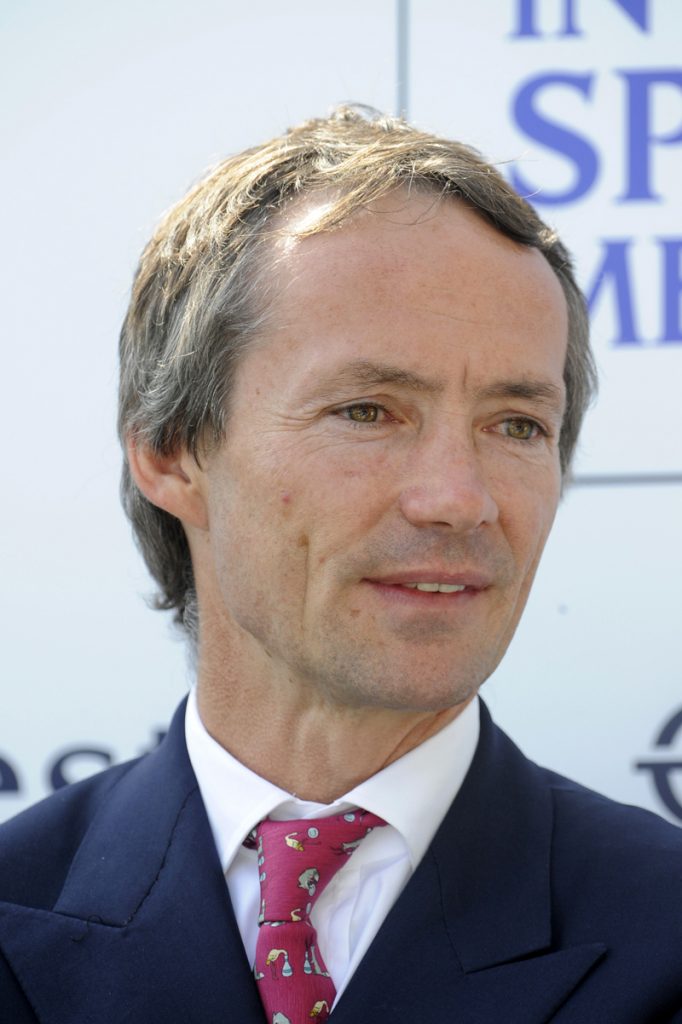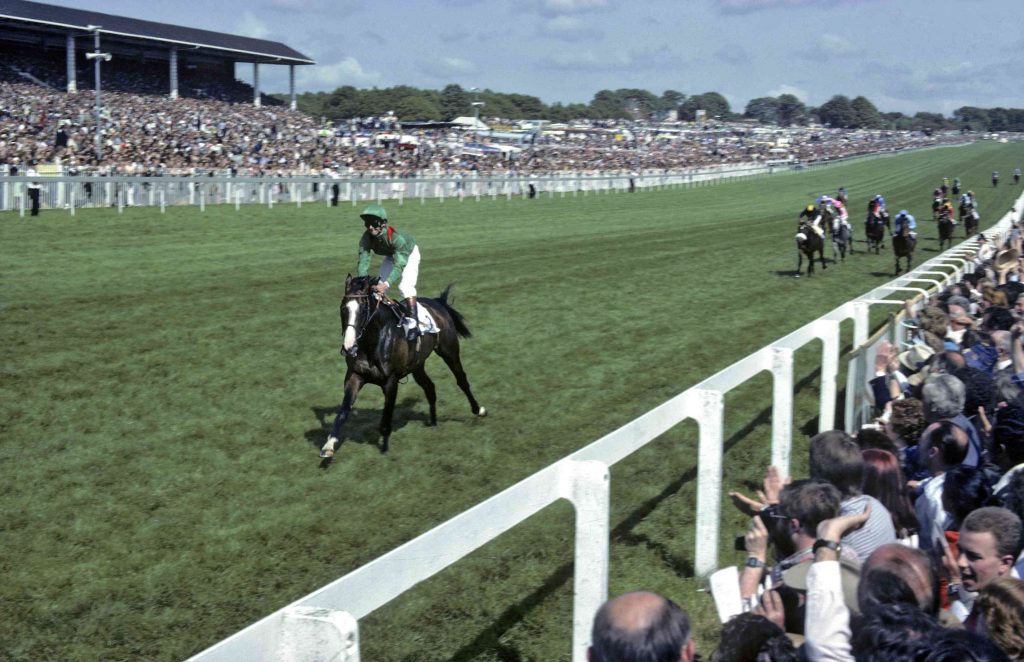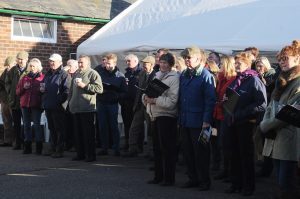Three years ago you turned your back on training racehorses. How have you been keeping yourself busy?
I have always felt that central London is an untapped area of people who want to get into racing but don’t know how to go about it. So I am in the process of setting up a racing club. We have a couple of horses with Jeremy Noseda and orders for more at the sales. I
believe you can have too many members of a syndicate and have kept numbers down to four owners per horse. One owner can choose the colours, another can name the horse, another perhaps have a say in who trains etc. Smaller numbers per horse enables more personal communication, which is all-important.
You sent out 270 winners over seven seasons, which would count as a success for most trainers outside the big Newmarket stables. Do you ever regret packing up or do you still feel it was the correct decision?
It wasn’t easy and was taken out of my hands. I thought I was doing great when I started but then in my second season found there were too many chiefs and not enough indians. But then training has never been easy.
I can recall getting a call at three in the morning from the vet treating a horse for colic and asking if he could put the horse on the operating table. Of course, he could go ahead, but half an hour later he phoned back to say the horse hadn’t made it and died.
That was our best horse, Stotsfold. I am often asked which was the easier, training or riding. They both have their tough sides.
Upon relinquishing your licence in 2011 you were quoted as saying: “I’m very confident you haven’t seen the last of me as a trainer”. So have you any plans to return in the near future?
The thought hasn’t gone away and the idea is still there. I know I can do it. But I am sitting tight at the moment and organising my racing club.
Your list of big-race wins in the saddle seems endless. When you watch the top action from around the world do you have pangs of wishing you were still out there?
Yes and no. When you see a big race like the Derby or the Arc of course you feel like rolling back the years, but luckily I am able to take a step back and be realistic. I then recall the tough times when I was struggling with my weight and the pressures that could bring with it.
Look, everyone has to make sacrifices and I consider myself to have been very lucky. I enjoyed it all and, make no mistake, if I could, I’d do it all again.
It is 21 years since you won the Champion Stakes on the Criquette Head-trained Hatoof at Newmarket. Has switching the race to Ascot been of benefit to the race and sport?
Moving the meeting to Ascot has been of benefit to racing, but not particularly to the Champion Stakes. We all knew at the time that the Ascot mile and a quarter start is one of the hardest to ride. It is a short run to the first turn, which makes it very difficult for anyone drawn wide.
For the sport overall, though, the switch to Ascot has been a big success, particularly with QIPCO’s sponsorship and all the marketing that goes with it.

Former jockey and trainer Walter Swinburn
What is your overall view of QIPCO Champions Day and was it an event that British racing needed in your opinion?
The whole day has been a huge step forward for British racing. We needed it and Ascot does a great job in staging it. For me, the end of the season, September, October, November, have always been the climax months.
That’s when the fillies come into their own. Champions Day has given our season the grand finale it was crying out for.
The level of prize-money and quality of races on Champions Day is increasing year-on-year. Can it ever supersede Arc weekend?
Not at the moment, I’m sad to say. The Arc is cemented as the number one race of the autumn and I’m sure the French will continue to build around their premier event. Every effort is being made on our side of the Channel to ensure that Champions Day is going forward each year and that can only be healthy for the sport.
But, whether we like it or not, the Arc is the ‘numero uno’ race in Europe.
Marketing of the sport has stepped up several gears in the recent years, including instant interviews with the jockeys after they pull up. Has racing benefited from the added exposure?
Absolutely. I have said it for a long time now that if ever there is a place for jockeys and trainers to sell themselves it is on television. And what better place than when you’re returning on the back of a winner? There was a time not very long ago when some trainers would not give interviews, but not any more. The sport is so much better for it.
Racing has never had such an opportunity to promote itself. We have the horses, the players and some of the right people on television and the press that want to put us up there in lights. If we can’t kick on for here, then it’s very sad.
Champions weekend starts on the Friday at Newmarket with the running of top two-year-old races, the Dewhurst, Middle Park and Fillies’ Mile. Is the same-day clash of the Dewhurst and Middle Park a progressive step?
No, I don’t think it is. The great thing in the past was that the Middle Park provided the first clue, which identified some of the classy, speedier horses. And then any of those Middle Park runners that looked like staying would have the opportunity to run in the Dewhurst a little later.
That opportunity no longer exists, which is disappointing.

Swinburn riding Shergar to victory in the 1981 Derby – Photo: George Selwyn
Can any horse ever repeat the incredible feat of All Along, ridden by you, winning the 1983 Arc, followed within a month by the Rothmans International at Woodbine, Turf Classic at Aqueduct and Washington International at Laurel Park, earning a $1m bonus?
It’s very doubtful. For a horse to win those three North American races in such a short space of time must be unique, and only two weeks after All Along had won the Arc. She was the first European horse to be voted Horse of the Year in America and I can’t see another horse achieving what she did.
I was asked to go and ride her work at Chantilly before the Arc after Lester Piggott had turned her down. She gave me a terrific feel; her whole demeanour was wonderful. When I arrived at Longchamp on Arc day her trainer Patrick Biancone took me into the stewards’ room to watch replays of previous Arcs.
That obviously paid off and so did the ambitious trans-Atlantic plans that followed. I was just so lucky to pick up the ride in the first place.
There’s been a lot of discussion about the mass of all-weather racing, with Newcastle, Catterick and Chelmsford City all jumping on the bandwagon. Did your view of all-weather racing change when you stopped riding and became a trainer?
With the greatest respect to the all-weather tracks, I was never in a hurry to get there. I rode a winner at Southwell but I can’t remember winning any more on the all-weather.
Kempton has turned a very good turf track into all-weather and I was particularly disappointed when I heard Newcastle was planning to rip up the turf for a synthetic surface. Gosforth Park has got everything going for it and it would be sad to see it change.
On the other hand, Chelmsford City [formerly Great Leighs] starts racing next year and I have no hesitation in nominating it as the best all-weather track in the country. I had runners there as a trainer and have walked the course, which has proper bends similar to those in America. The layout is so much better than the other all-weather tracks.
These all-weather courses should provide stables and facilities for new young trainers to give them the opportunity to begin their careers without being saddled with the initial costs of investing in their own yards and gallops.
Outside Britain, which country did you enjoy riding in most of all, and why?
Hong Kong’s two courses, Sha Tin and Happy Valley. Jockeys out there were bigger than Tom Cruise and there is a tremendous buzz on and off the course. You could go anywhere and nearly always be recognised.
Almost all the restaurants in Hong Kong have their own betting booth and racing is a huge part of the culture there. It was always good racing and both tracks were very different but excellent in their own ways. On my first day at Happy Valley I rode three winners.
Competing out there sharpened me up; when I returned [to Britain] I stepped up my game as a result of my Hong Kong experience.
How different is a jockey’s life today than when you were riding?
There is much more pressure on jockeys today and I feel for them. They have cameras on them from all angles. They are not being allowed to express themselves and ride with flair and touch because of the rules and the constant scrutiny.
‘Feel’ was a word that Sir Michael Stoute always fed into me and it is important for jockeys to be allowed to ride with feel, rather than having to continually force their mounts. Of course, there are those with wonderful flair and feel like Ryan Moore and Richard Hughes.
Overall jockeys get more help these days with their diet, weight, emotional problems and injuries but I do remember it could be a lonely place at times and that’s what I found difficult.
You were one of the first trainers to support Adam Kirby in his apprentice days. Have you been surprised by his progress?
Adam stood out from day one. He’s got the feel, the class, he’s got it all. There’s just one thing against him, his weight. But he seems to be handling that great.
I knew he was class that day on the gallops when his phone went off and he pulled it out of his back pocket and took the call. He then went a length clear and put the phone back in his pocket. Doesn’t that say everything?
He is absolutely gifted and I think probably one of the elite riders. If he was a natural eight and a half stone, he’d be champion.
You are a three-time Derby winner on Shergar (1981), Shahrastani (1986) and Lammtarra (1995). Does the Epsom Classic still retain all its old magic?
It’s still the greatest test of the thoroughbred but it should have retained its Wednesday slot and not been transferred to Saturday. How can it be expected to compete with all the other sports on a Saturday? Derby day on the Wednesday was almost sacrosanct.
The authorities had a golden opportunity to build on the day when the race had the stage to itself. It seemed to have more of a mystique about it then.
Having ridden against many of the greats, who would you say was your hardest opponent in the saddle?
Much as I hate to say it… Willie Carson! You never knew how much he had in hand. Many of us have been embarrassed by his brilliant deception.
We have gone there with double handfuls thinking we could take him at any time as his horse was doing nothing under him. But then all of a sudden he would gather his mount and you’d be left looking silly.
If you could turn back the clock and do one thing differently in your professional career, be it as a jockey or trainer, what would it be and why?
I should have won the 1989 Breeders’ Cup Mile at Gulfstream Park on Zilzal, who could be difficult on the way to the start.
I always liked to give him time to cool off and settle down before going into the stalls, but the American outriders, conscious of getting the race off on time for television, insisted on virtually dragging him into the stalls.
It all went badly wrong and I always look back wishing things had been done differently, because at the end of the day he should have won the race.



